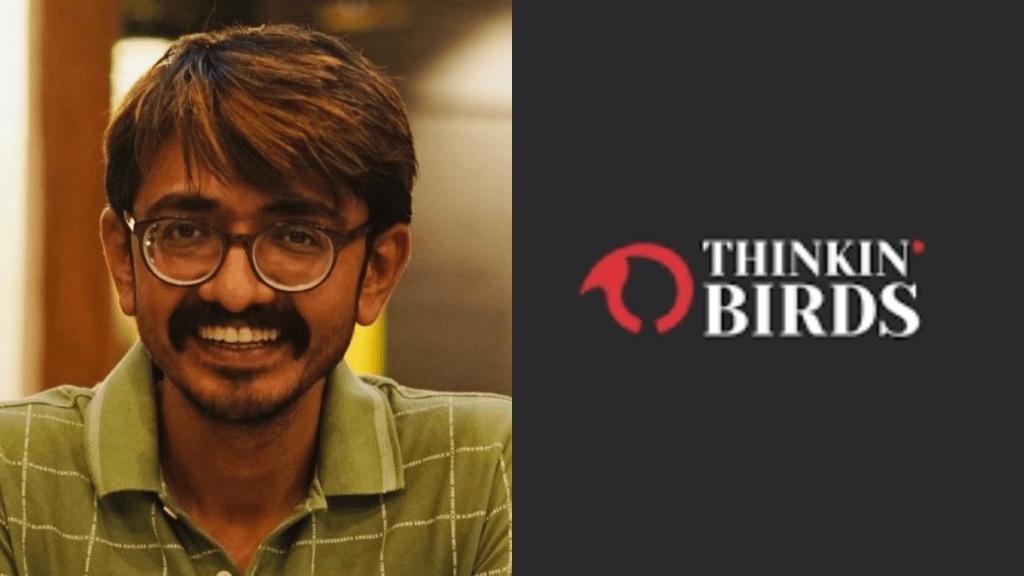The pandemic has brought about notable shifts across industries, and the case has been no different for marketing. Today, digital marketing has become a crucial aspect in order to acquire new customers and retain existing ones. In our weekly BrandWagon Ad Talk series, industry experts highlight what has changed over the past two years and more importantly, are these changes here to stay. Bhavik Mehta, CEO and founder, Thinkin’ Birds Communications, talks to BrandWagon Online, about the dos and don’ts of digital marketing, best marketing campaigns, and more.
What is the difference between launching a brand in today’s digital era versus earlier?
Launching a brand in today’s digital era is marked by unparalleled accessibility and reach, thanks to the global reach of digital platforms. It involves cost-effective marketing, precise audience targeting, and real-time feedback, which were only readily available after a while. User-generated content and data-driven decision-making are pivotal, empowering consumers and guiding brand strategies. However, global competition is intense, emphasizing the need for differentiation. Speed to market is faster, transparency and trust are paramount, and brands must adapt quickly in this dynamic and data-rich landscape, where success hinges on engaging and resonating with a diverse, digitally connected audience.
What are the recent best marketing or advertising campaigns you have seen and why?
Cadbury’s advertisements have consistently emphasised the themes of happiness, togetherness, and community, and their “Kabhi Kisi Aur Ki Khushi Main Shamil Hoke Dekhiya” campaign is no exception. The campaign comprises a series of short films that showcase the profound impact of happiness and unity. These vignettes feature individuals who have experienced unexpected moments of joy in unlikely places. One story focuses on a woman who discovers fulfillment in volunteering at a local orphanage, spreading happiness to children through Cadbury. Another segment highlights a group of friends embarking on a road trip, attending a concert together, and relishing each other’s company.
Through a collection of diverse clips, the campaign consistently conveys a heartfelt message: Happiness is Contagious. It has resonated deeply with viewers by emphasizing that we all contribute to someone else’s happiness, eliciting smiles in the process. In essence, the “Kabhi Kisi Aur Ki Khushi Main Shamil Hoke Dekhiya” campaign is both motivational and emotionally stirring, aligning seamlessly with the brand’s enduring values of joy, happiness, and unity.
Which brand in the last year has made the best use of digital and how?
Netflix’s marketing strategy never rests – it remains finely attuned to the latest shows, trends, and memes, ensuring its continual engagement with an ever-expanding audience of 140 million global subscribers. Netflix’s mastery lies in personalization. Personalized marketing stands as an effective means of breaking through the marketing noise, as a staggering 91% of consumers express a greater willingness to engage with businesses providing tailored offers. Netflix excels in this arena without overwhelming its subscribers. Rather than bombarding users with a torrent of suggestions, the company recognizes that online consumers respond more favorably to a single, relatable email over a deluge of generic content. As a digital marketer, adopting a staggered email approach can yield remarkable results. Netflix expertly crafts highly personalized emails and push notifications, featuring easily digestible content and a crystal-clear CTA button, often reading ‘Play.’ As a Netflix customer, you’ll receive an email recommending a film based on your past choices, addressing you by your first name, a personal touch that contributes to its unmatched customer retention.
In a post-Covid world, what are the dos and don’ts of digital marketing?
In a post-Covid world, the dos of digital marketing include:
- Adaptability: Continuously adapt your digital marketing strategies to changing consumer behaviors and preferences.
- Emphasis on Online Presence: Strengthen your online presence as more consumers shop and engage online.
- Data-Driven Decisions: Rely on data and analytics to inform marketing decisions for better targeting and ROI.
- Content Relevance: Create valuable, empathetic, and relevant content that resonates with your audience’s current needs.
- E-commerce Integration: If applicable, integrate e-commerce solutions for seamless online transactions.
The don’ts include:
- Ignoring Safety: Avoid insensitive or tone-deaf marketing that disregards the ongoing pandemic’s impact.
- Overwhelming Messaging: Don’t flood customers with excessive messages; prioritize quality over quantity.
- Neglecting Mobile Optimization: Don’t overlook mobile optimization, as mobile usage continues to rise.
- Neglecting Security: Ensure the security of customer data to maintain trust.
- Ignoring Feedback: Don’t ignore customer feedback; use it to refine your digital marketing approach.
One recent bad case of advertising you have seen, and why?
Dove initially garnered success with its “Real Beauty” campaign, which featured real women in a positive and empowering light, focusing on promoting a positive body image for women. This campaign ran for an impressive 15 years and was widely regarded as one of the most successful marketing initiatives in this realm.
However, Dove faced criticism when they introduced limited edition packaging in England that aimed to represent diverse female body shapes but ultimately missed the mark. The packaging compared women’s bodies to abstract, shapeless soap bottles, inadvertently sending the wrong message. This release became a source of ridicule and concern on social media platforms like Twitter and Facebook. With only seven different bottle shapes to choose from, it inadvertently pressured women to select the bottle that they felt matched their body shape, unintentionally exacerbating self-consciousness instead of reinforcing a positive body image.

